Floristry is Changing
An Alternative
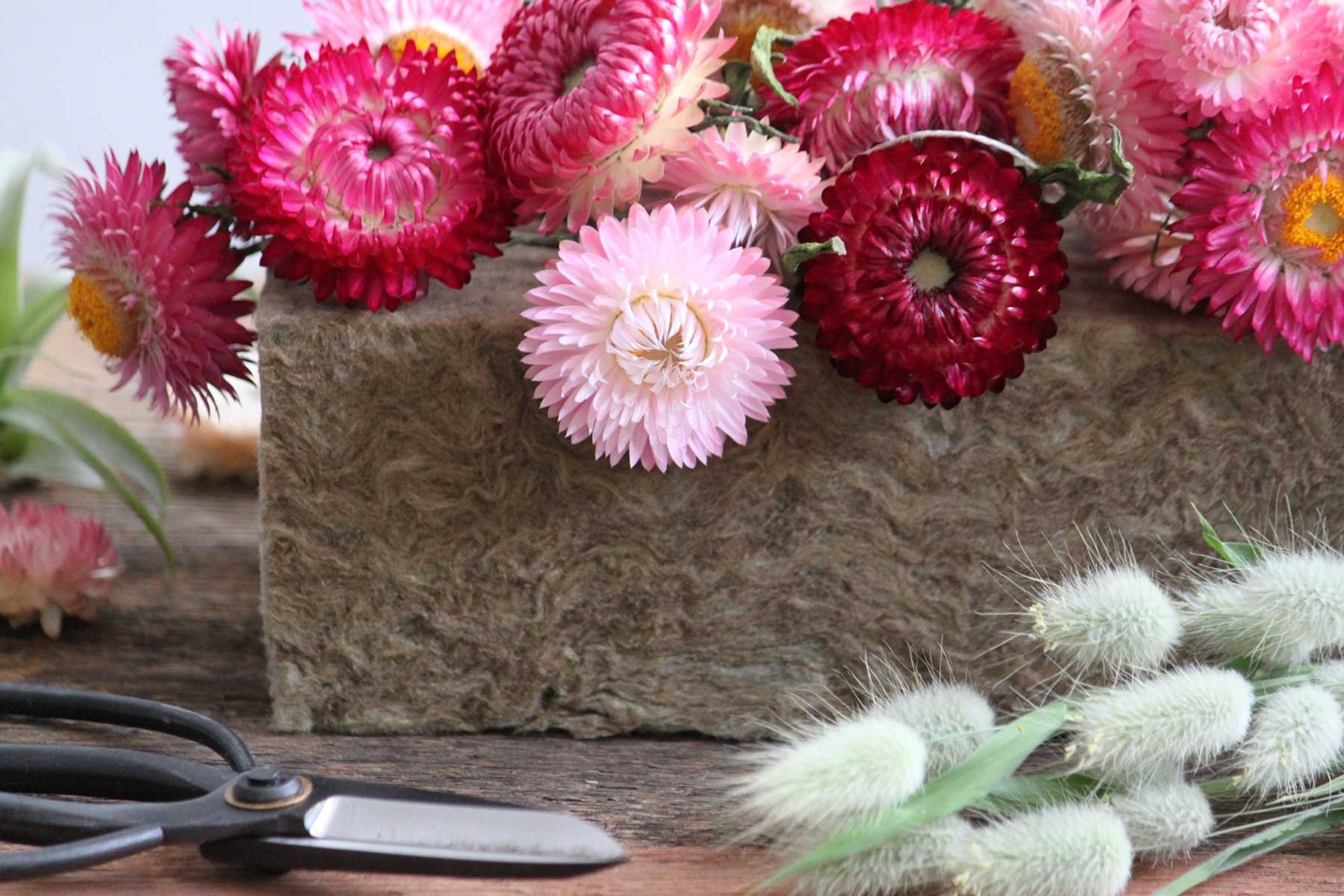
An alternative to floral foam, made from basalt rock and a sugar-based binding agent, ‘Rockwool’. Image: thursd.com.
Floral foam or ‘oasis’ are those green, spongy blocks that florists have been using a long time to anchor flower arrangements and keep them hydrated, as the blocks soak up and hold water. What many people don’t realise is that the foam is a single-use product made of plastic that takes hundreds of years to break down. Some experts even suggest that they may never break down in landfill.
First created in the 1950’s, floral foam soon became established as an essential tool in modern floral design. A by-product from another industry that just happened to find a function in floristry, it holds up to 50 times its weight in water, and can support a flower or foliage stem in a desired position. It can be easily cut and shaped to fit into a container and is cheap to purchase – unfortunately a 2019 study showed that floral foam harms aquatic organisms – this type of plastic does not biodegrade in an environmentally friendly way. Typically, the material just fragments into ever smaller particles. These microplastics then are easily dispersed into the environment where they cause a lot of problems. They can be ingested by a range of freshwater and marine animals and adversely affect their health.

A spiky alternative by Anthropologie, ‘Flower Frogs’.

Flowers standing in balance, from Olga’s Flower Farm on Instagram.
A Floral Foam Alternative
Agrawool Natural Floral Foam appears to be the first product of its kind, that can be described as a more sustainable alternative to traditional floral foam. ‘Rockwool’ is a product of AgraWool International, Netherlands and is made of 97% powdered Basalt rock and a sugar-based binding agent which is spun into a ‘wool’ product at a high heat. The resulting product is similar to growing mediums used for hydroponics and could be described as blocks of felted cotton in texture. It is a non-toxic, environmentally benign material made from natural materials. The product will biodegrade and become rock dust when added to the soil and wouldn’t pose an ingestion risk to animals in the way plastic does. For more information about this product go here.
What are other alternatives to floral foam?
Chicken Wire. Chicken wire has become one of the designer's materials of choice and has been used for many years as an alternative to wet floral foam
Flower Frogs - see these examples from Anthropologie
Gravel rocks and pebbles
Willow, rattan or pliable reeds
Wood Wool
Straw
Water vials
Flower Foliage
Here’s a beautiful, Zen-like and 100% sustainable floral design we found on Olga’s Flower Farm on Instagram. A new style of floral composition ‘Kukido’, apparently devised by Yuichi Tamaru, that keeps the flowers standing, in balance: this design emphasises the stem, and natural form. All parts of the flower are exposed, even those damaged or withered. Arranged on a tray with a few millimetres of water – the ‘Kukido values the plant element whatever its size.
_
Collaboration with Garden Life
A Design Dialogue Between Garden Life and Adam Robinson Design
Handmade in Italy
Designed by Jacopo Foggini is the Edra A’mare Collection of unique outdoor furniture.
Mud Australia
A sleek, portable, and rechargeable LED light crafted from a single piece of hand-formed porcelain.
Inside Out Magazine
We were delighted to see two articles on Adam Robinson Design in this month’s issue of Inside Out Magazine.
Billy Collection
Beautifully crafted to incorporate metal, timber, glass and fabric materials into the design.
Australian Grown
People do buy plants virtually, not big plants, but smaller seedlings, and they come to you through the post boxed up in a beautiful assortment.
Coloured Hoses
We love this new range of beautiful, coloured hoses by Nylex Australia launching in Bunnings this Summer!
Peter Lewis’ Porter’s Paints
Recently launched Peter Lewis Paints - better for our health and the health of our planet.
News from our Neighbourhood
Woollahra Council sent out a call-out recently to celebrate nature by exploring the foreshores and suburban streets of Double Bay.
Rattan Artisinal Design
We love the Abai Rattan Armchair, Bahir Outdoor Lounge Chair and Bahir Outdoor Sunlounge.
Wendy Whiteley
The extraordinary story of how this harbourside garden came into being.
TAIT + MOKUM
The new Voom Collection is a great collaboration between our friends at TAIT + MOKUM.
Lucca Collection
The inside/out Lucca collection of chic stone tables is a seriously contemporary take on the classic Mediterranean outdoor tables.
French Modern
The Wave chair is available in limited numbers and comes in a black finish.
Australian Ceramicists
All hand made things have something of their maker in them and these stunning Objects of Desire available through Garden Life.
Changing the Way We Live
Could you imagine living in a house that grows its own food? Picture solving the world’s biggest problems simply by changing the way we live.
Innovative Waste Management
RecycleSmart is an innovative waste management company, and they are on a mission to help everyone recycle more!
Handmade-With-Care
Natural, handmade-with-care products by artisans and master craftspeople are the new guard in design.
House of Bamboo
Bamboo is an amazing natural material that provides a sustainable alternative to traditional decking outdoors.
Apothecary
Mama & Lou Apothecary is a small-batch product range, blended from high quality natural and organically farmed ingredients sourced from Australia and France.
Genuine brick
The latest offering from Brickworks Building Products is the Thin Brick range with a thinner profile.
from Karman
It is a modular and adjustable collection of lighting that is incredibly versatile and fun.
by Nathalie Du Pasquier
The BRAC is an artisanal extruded product that is suitable for internal or external walls and structures.
Pixxie Pocket Projector
We are besotted with this cute Pixxie Pocket Projector to turn your outdoor space into an instant moonlight cinema.
Dine Out
The round tables come with a conical pedestal base with green & white or yellow & white terrazzo and both colourways are stunning.
at Lo & Co
Creamy beige knobs and back-to-back entry handles are now a part of Lo & Co’s stone handle range.
at Lo & Co
Creamy beige knobs and back-to-back entry handles are now a part of Lo & Co’s stone handle range.
from Mokum
South Beach upholstery is a heavy duty luxe fabric which is fire retardant, and stain resistant.

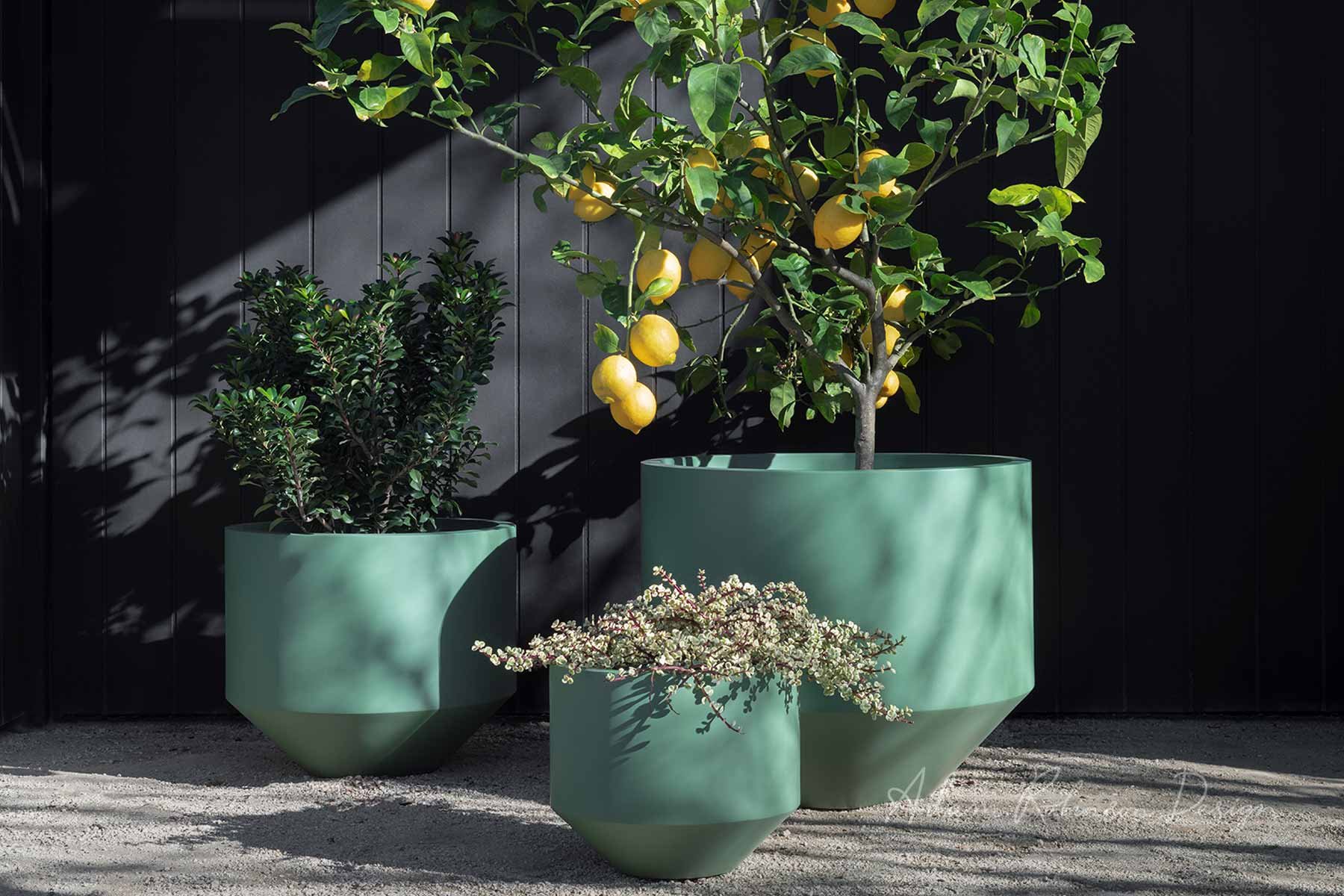

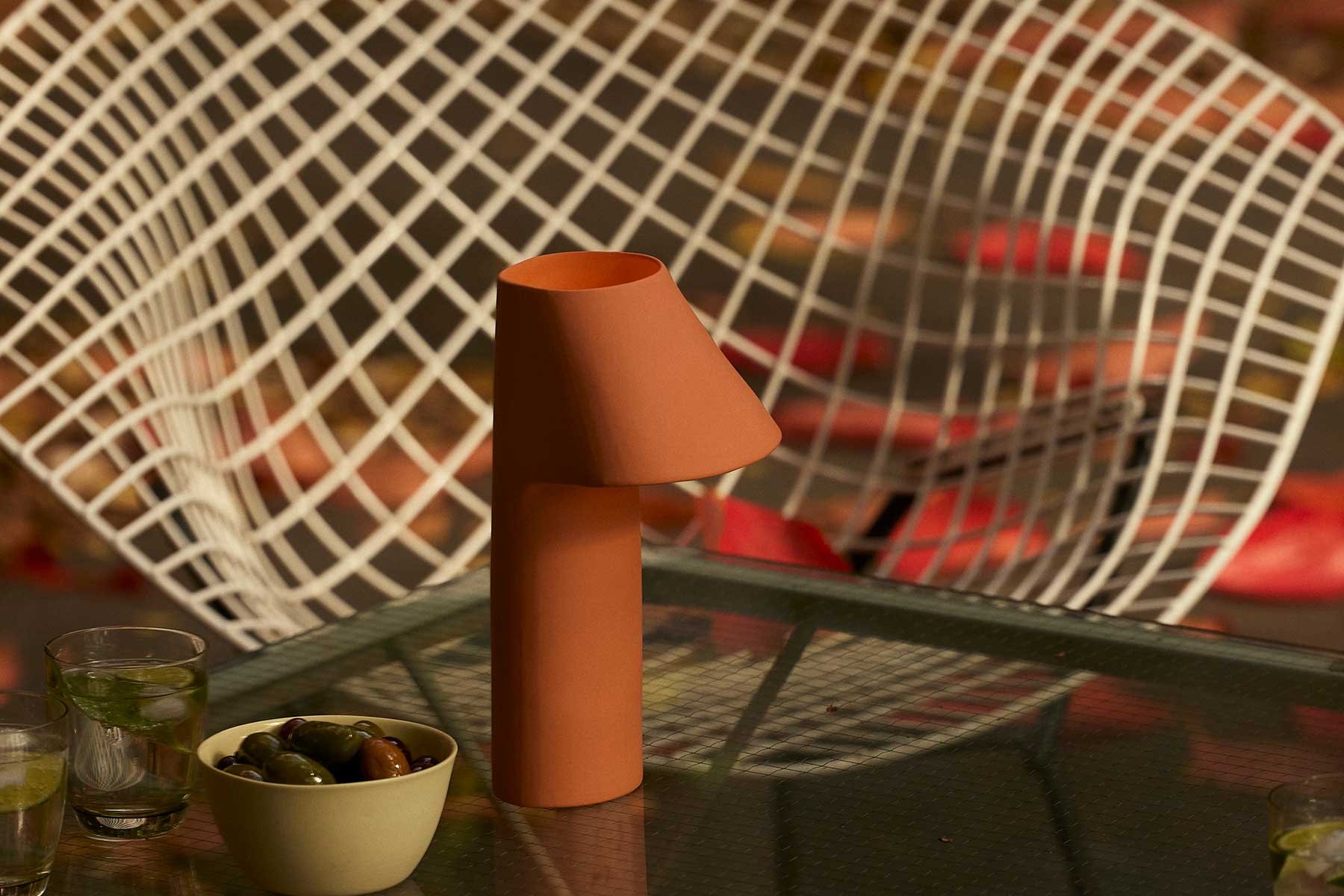











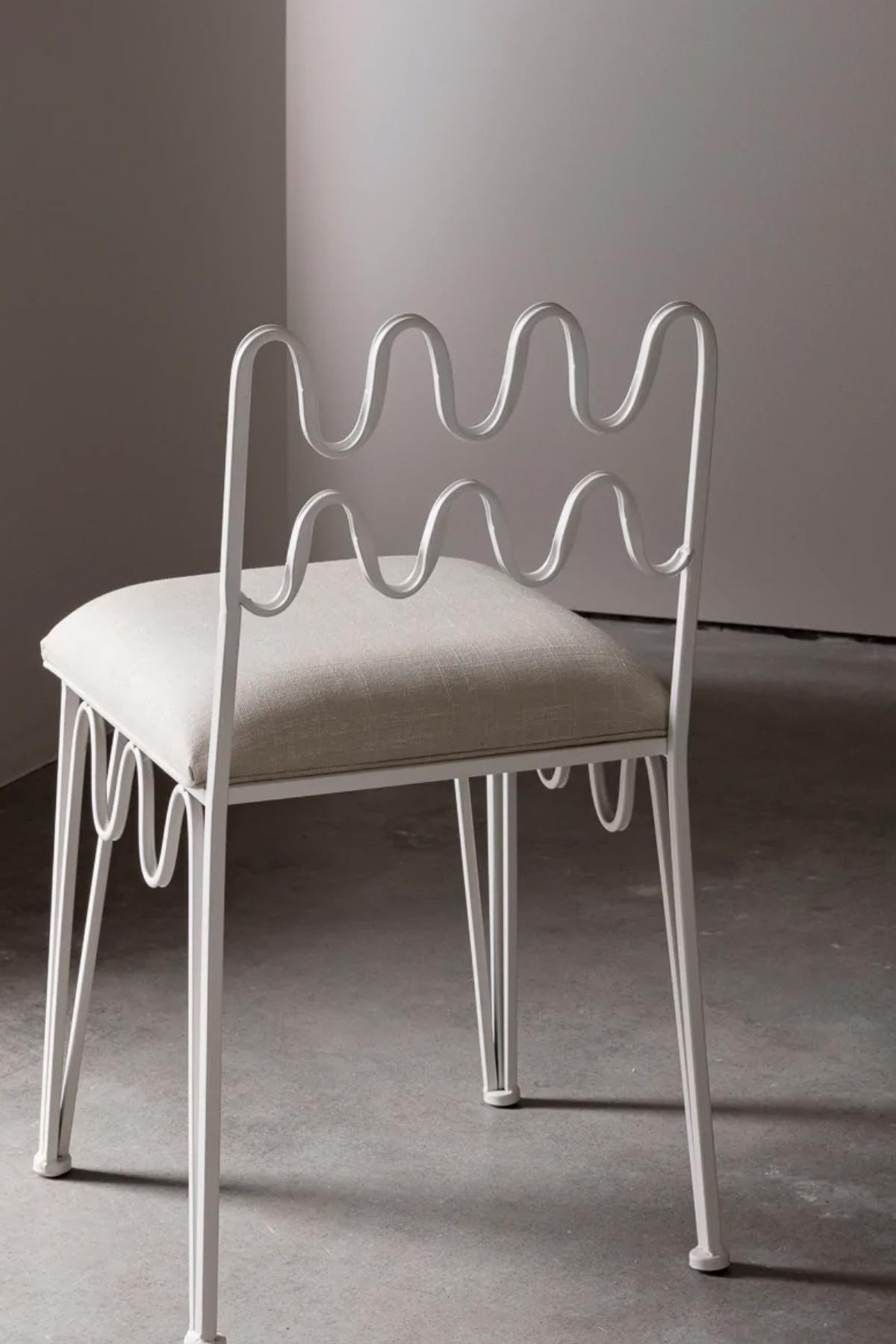

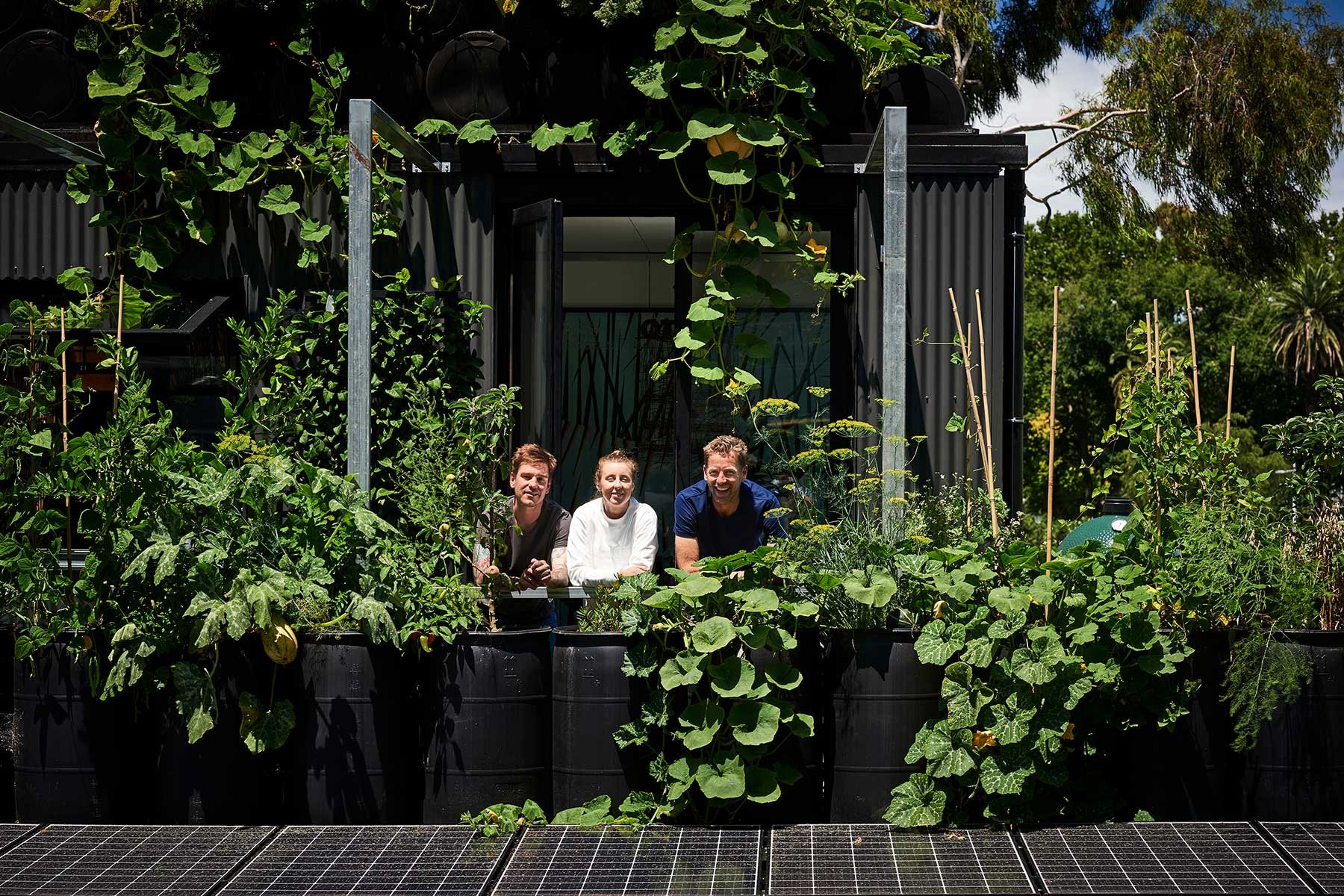

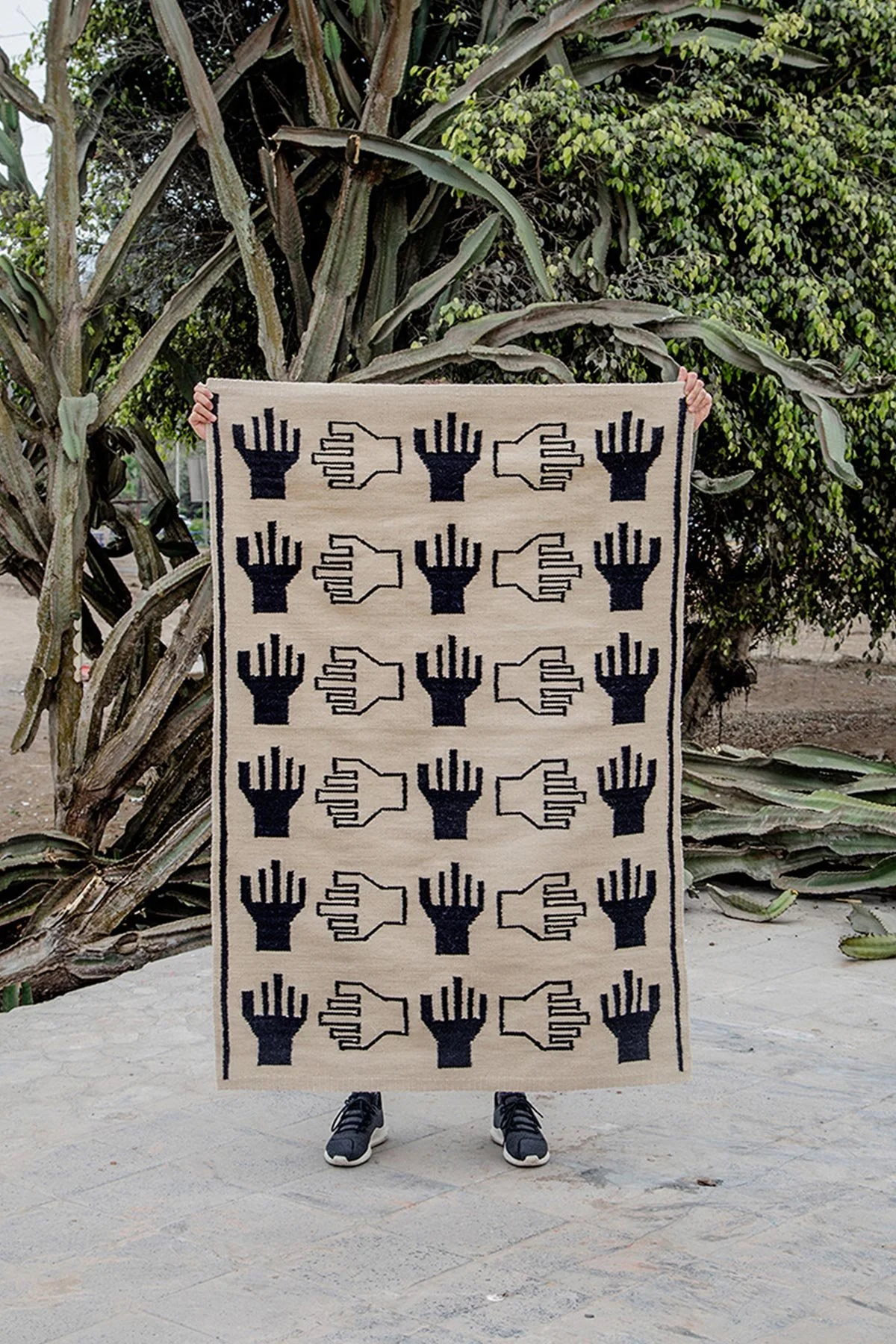










Ocean Master MAX Bolero: Ombre Blossom
Where Mediterranean elegance meets sculptural refinement, the Ocean Master MAX Bolero emerges as a parasol of exceptional poise.